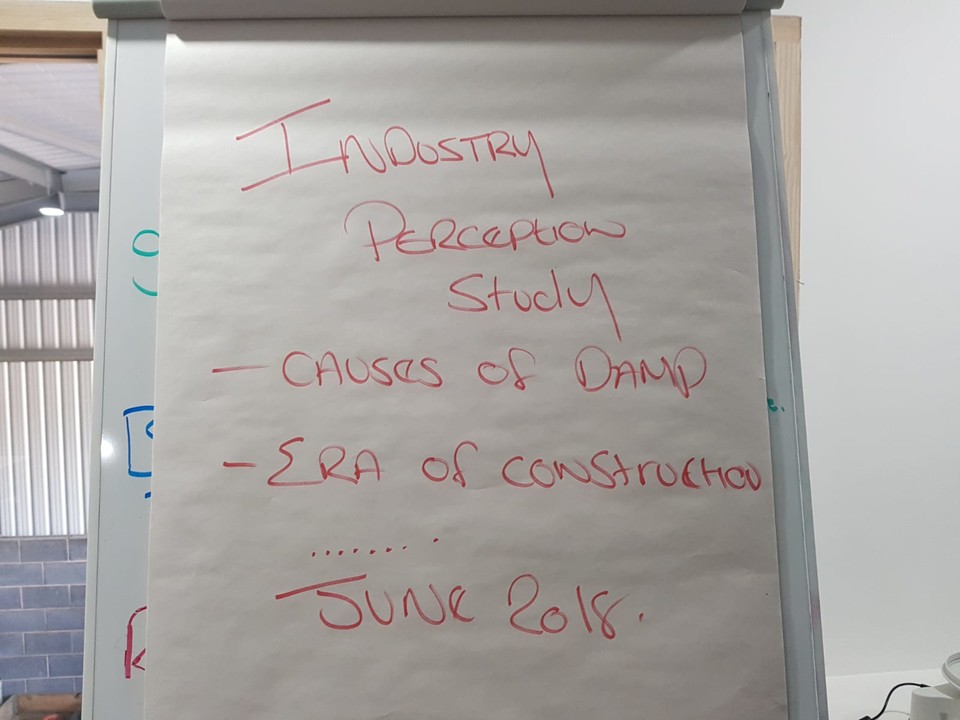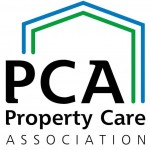
Although I dislike the thought, there is the perception that our industry is full of con artists; surveyors running around sticking inaccurate moisture meters in walls of buildings diagnosing rising damp in every property with the only appropriate solution being the inevitable retro-fit damp proof course and expensive re-plastering. It is an image which has tainted the industry for the past thirty years. Like many industries, ours can be quite simple to start up in; Buy yourself a vehicle, a moisture meter, set up a website, even call yourself a specialist. There is nothing stopping you from doing it. Of course, It doesn’t mean you are a specialist, although there’s nothing stopping you claiming to be. Similarly, it doesn’t mean you are going to get things right or know what you’re talking about, but often when dealing with a client who’s reliable on your expertise it’s not difficult armed with what little information you can read online coupled with a few manufacturer training courses to bamboozle a client and pretend you’ve got this sussed!
I, myself like many others have tried to improve the image of our business, providing answers to the questions of diagnosis, causes and treatment for damp in buildings. Any technology or equipment available to aid our assessment, inspection and treatment of damp problems is purchased and utilised to its fullest extent.
Our surveys usually take a couple of hours to complete, ensuring that we thoroughly survey our buildings, establish the true cause of any problems and consider a repair sympathetic to the building and the client. I have however, heard many stories of some companies sending surveyors out with 10 surveys a day. That’s Impossible and irresponsible!!!!
 The Property Care Association (PCA), the industry’s leading body, have strived to ensure that the members of the association are the cream of the industry, made up of qualified, knowledgeable, trained and experienced professionals who understand the inspection process, diagnosis and repair of both historic and modern buildings.
The Property Care Association (PCA), the industry’s leading body, have strived to ensure that the members of the association are the cream of the industry, made up of qualified, knowledgeable, trained and experienced professionals who understand the inspection process, diagnosis and repair of both historic and modern buildings.
Over the years I have lost count of the number of properties we have surveyed which have been misdiagnosed with rising damp, penetrating damp or condensation, often by the non-qualified and inexperienced, marketing themselves as specialists. Claims on the internet from people such as Jeff Howell and the like state that rising damp doesn’t exist and is a phenomenon made up by the chemical and damp proofing industry simply to sell unnecessary work. The science however defies all logic to these claims.
At Dryfix we wanted to understand just how many of our enquiries were related to issues of rising damp in comparison to others and what was the most common era of problematic properties. So, to do this we created an industry perception study, taking the first fifty surveys throughout the month of June 2018.
 The details of the first fifty damp surveys were recorded, such as; the client, approximate age of building, method of construction, whether the properties incorporate an original or retrofit damp proof course, or sometimes both and the cause of damp diagnosed. All of the survey enquiries were booked in as damp surveys by the client and the results of our study were not surprising to ourselves but may be surprising to others, defying the perception above.
The details of the first fifty damp surveys were recorded, such as; the client, approximate age of building, method of construction, whether the properties incorporate an original or retrofit damp proof course, or sometimes both and the cause of damp diagnosed. All of the survey enquiries were booked in as damp surveys by the client and the results of our study were not surprising to ourselves but may be surprising to others, defying the perception above.
Here are the results
The clients
Of the fifty properties surveyed, 20 (40%) were domestic clients, 6 (12%) were commercial clients and 24 (48%) were association, belonging to Councils and Housing Trusts. We service many of the councils and housing trusts in North Yorkshire.

The construction
29 (58%) of the buildings were of cavity construction and 19 (30%) were of solid construction with one (2%) of modular construction.
Damp proof courses
38 (76%) of the buildings incorporated original damp proof courses with only 18 (36%) incorporating retro-fit damp proof courses and 11 (22%) incorporating original and retro-fit damp proof courses.
As can be seen, many of the above surveys were undertaken to properties which actually incorporated original damp proof courses.
Era of construction
The most common period of properties surveyed was surprisingly the 1940’s, with 16 (32%) out of fifty requesting surveys. Most un-surprisingly a close second, the late 1800’s and early 1900 properties, a total of 12 (24%).
The majority of the buildings we surveyed are surprisingly less than 80 years old with most incorporating an original damp proof course.

Causes of damp
Regarding the causes, the most common cause of damp found throughout our fifty surveys was a breach of the original damp proof course, which accounted for 17 out of 50 surveys, that’s a staggering (34%). The second most common cause was the escape of water which was 16 out of 50 surveys (32%).
The third was condensation which was found in 8 (16%) of the properties. This was closely followed by penetrating damp 6 (12%), damp proof course failure 5 (10%), and those with no problems 5 (10%).
Flooding accounted for 3 out of 50 surveys at (6%) and the absence of an original damp proof course just 1 (2%).
You may have noticed from the above there 55 causes of damp in only 50 properties. That’s because some buildings had one or more issues contributory to the cause.

As can be seen from the above, by far the most common cause of damp identified over a survey of fifty properties was a breach of the original damp proof course. Considering the data above, this is most likely to be in a property constructed within the era of 1940. The 19401’s are an era which some might expect properties to adequately protected and well-constructed. Damp proof courses had been common place in construction for many years prior to this era of construction with the suggestion that these properties should be free from issues with capillary dampness. This however does not appear to be the case. Poor design, a lack of understanding regarding damp proof course positioning, construction alterations and sloppy building practices are commonly the cause.
The second most common cause of dampness was an escape of water, relating to bathroom leaks, plumbing defects and faulty drainage however, this does not include issues like penetrating damp from faulty external rainwater goods, these were listed separately as penetrating damp.
There may be a reason why we encounter so many escape of water events, possibly the nature of our business. Dryfix has a strong name for leak detection and trace and locate inspections, as opposed to many companies within our industry which just undertake remedial repair with chemicals. Our extensive knowledge of drying buildings with the use of specialist equipment, as opposed to chemicals may tailor some of the enquiries towards escape of water events. Because we deal with escape of water events, we are also experts in finding leaks, therefore, if we’re surveying your property for damp and you have an escape of water, it’s almost certain that we will find it.
Many of the problems within our industry are not just driven by the supply chain, quite often the demand for chemical injection and localised re-plastering is provided by the client. We receive phone calls on a daily basis asking for quotations for a chemical damp proof course or re-plastering to which our reply is always “how do you know you need a damp proof course installing?” the answer is most often “because I have damp”. There is a perception by everyday clients that a chemical resolves all sources of damp, and the assurance offered by a guarantee only reinforces this myth.
Overall this study has been interesting, it highlights the fact that just because you have a damp proof course, it doesn’t mean that you’re not going to have problems particularly if your property was constructed in an era of 1930 – 1950. In addition, just because you have symptoms of damp, it doesn’t actually mean you have rising damp. Penetrating damp, water leaks and minor floods to the untrained can all display similar symptoms.
Ultimately self diagnosis is not the answer. If you’re having problems with damp no matter what your thoughts are instruct a professional to survey and report on the cause before considering any work. Be smart choose a professional company with qualified surveyors, members of the Property Care Association.
Our damp and timber reports are only undertaken by experienced and fully qualified surveyors who hold the National Qualification for remedial surveying C.S.R.T. awarded by the BWPDA / PCA, our industry body. This proves that our surveyors have been independently examined and tested, proving their extensive knowledge and expertise.
All of our surveys are carried out in accordance with The British Standards Code of Practice.
Our surveyors carry all the necessary diagnostic and inspection equipment onsite, including thermal imaging and fibre-optic cameras to examine hidden cavities, highlighting blockages and bridged damp proof courses. Salt analysis testing and equipment for in-depth moisture analysis of masonry walls and plaster is also available. Photographic evidence of our findings is recorded and included within our report, so you can be sure of correct diagnosis.
Our reports contain comprehensive advice of any problems identified and include our recommendations, specifications and costs for repairs, if necessary. Edited pictures along with category damage ratings are also included to assist your understanding about the urgency of any repairs needed.
Our reports are available in both printed media and/or converted into secure electronic Portable Documents (PDF) for email.
Suspect a Problem?
If you suspect a problem and require a survey, or need advice please Contact us.


